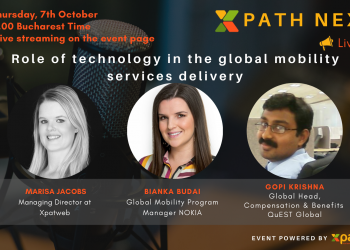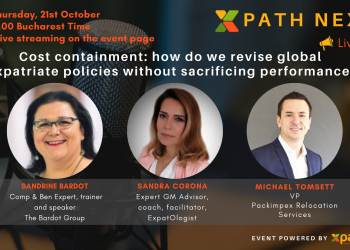[elementor-template id=”3753″]
This is dummy title and will be replaced with real title of your post
Image with size : 1140×570
Image: unsplash.com
Employees worked from home in record numbers during the first few months of the COVID-19 pandemic, and they had unprecedented degrees of autonomy.
As businesses reopen, we can build on our achievements to create better workplaces than the ones we left behind. HR has a limited time to create psychologically secure workplaces, trust-based employment relationships, and socially linked workforces.
However, progress toward improved workplaces is contingent on a few key changes in the HR researcher–practitioner interaction.
What do we know right now?
The pandemic of COVID-19 is causing significant changes in the workplace, with a focus on small teams, flexible employment, and remote workers.
HR researcher–practitioner collaborations can take advantage of these shifts to create meaningful work that is socially connected.
Unfortunately, businesses are now enacting more formalized flexibility policies and increasing employee surveillance, jeopardizing the achievements made during the pandemic.
The COVID-19 pandemic, which began in 2020, turned companies inside out. Workers were released from their downtown office buildings all around the world and sent to work remotely from their kitchen tables and spare bedrooms.
Many firms are now reopening their doors and bringing employees back into the office after months of isolation. People are talking about “returning to normality” in their living rooms and on social media. However, such ‘normal’ workplaces included a lot of negative aspects, such as interminable meetings, paperwork, and bureaucracy. Isn’t there a chance to reinvent the workplace and make it better than the one we left behind?
Some analysts have come up with the term “new normal,” but new research favors the teerm “next normal.”
‘Next normal’ recognizes that life is fluid, and what was ‘normal’ at the start of 2020 may be different in 2021 and beyond. The next normal might be the best we’ve seen thus far. However, making it a reality will almost certainly necessitate a rethinking of the relationship between HR scholars and practitioners.
The HR opportunity
HR professionals must first create physical safety cultures within their organizations before moving on to psychological safety. Workers believe that their personal safety is a top concern at work when they agree on a safety climate (Zohar, 2000); an organization supports these perceptions through its safety rules, procedures, and practices (Griffin & Neal, 2000). During the return-to-work transition, HR would have to make it clear that employee safety is the first priority (Ely & Meyerson, 2010).
While it may seem simple to prioritize physical safety during a pandemic, organizations frequently treat safety and productivity goals as equal priority; under the pressure of tight deadlines or demanding clientele, safety goals might fall to second place. When a sequence of “HR events” communicates and reinforces the safety message, an organizational-level safety climate is more likely to emerge.
Socially connected workforces
Concerns among executives that remote work decreases collaboration and delays employee development have sparked interest in hybrid models, in which people work three days in the office and two from home (Cutter, 2020; Kitney, 2020).
These hybrid approaches (New Zealand Work Research Institute, 2013) have been advocated by researchers to attain the benefits of working from home (more focused time for deep work) as well as the benefits of working in an office environment (more collaboration with coworkers) (Felstead & Henseke, 2017). Hybrid models may allow for more spontaneous conversations, reducing loneliness and improving employee happiness. Employees who engage in office chit-chat have more pleasant feelings.
The advantages of hybrid models, on the other hand, will only be realized if work-based social connectivity is ingrained in the organizational culture. According to research, interconnected HR policies and practices such as value statements that express the organization’s commitment to its people, new-hire induction activities that use relational language, organizational training that teaches employees to constructively manage interpersonal conflict, and norms that encourage paying public compensation create relationship-oriented cultures (Six & Sorge, 2008).
Furthermore, work-related relationships do not have to be confined to coworkers. Employees are more likely to perform effectively when they have direct contact with the internal and external ‘clients’ who receive their work (Hackman & Oldham, 1980), or the ‘beneficiaries’ whose lives are influenced by their job (Hackman & Oldham, 1980). (Grant, 2008). However, as a result of the pandemic’s social distancing requirements, many of these bonds have been lost or damaged (ABC News, 2020; Convery, 2020).
HR practitioners must integrate relationship-building directly into the jobs of the new normal, reuniting workers with the people they serve and allowing them more freedom to address the needs of their customers, clients, and beneficiaries.
Source: Human Resource Management Journal
Read more HERE.
Related Posts
edit post

Relocation
HR and ‘new normal’ vs ‘next normal’
edit post

#XpathNEXUS
Cost drivers to make mobility affordable
edit post

#XpathNEXUS
Step by step compliance on Global Telecommuting
edit post

#XpathNEXUS
Role of Technology in Global Mobility delivery
edit post

Uncategorized
Elena Antoneac, one of the Strong Women in IT 2021
edit post

#XpathNEXUS